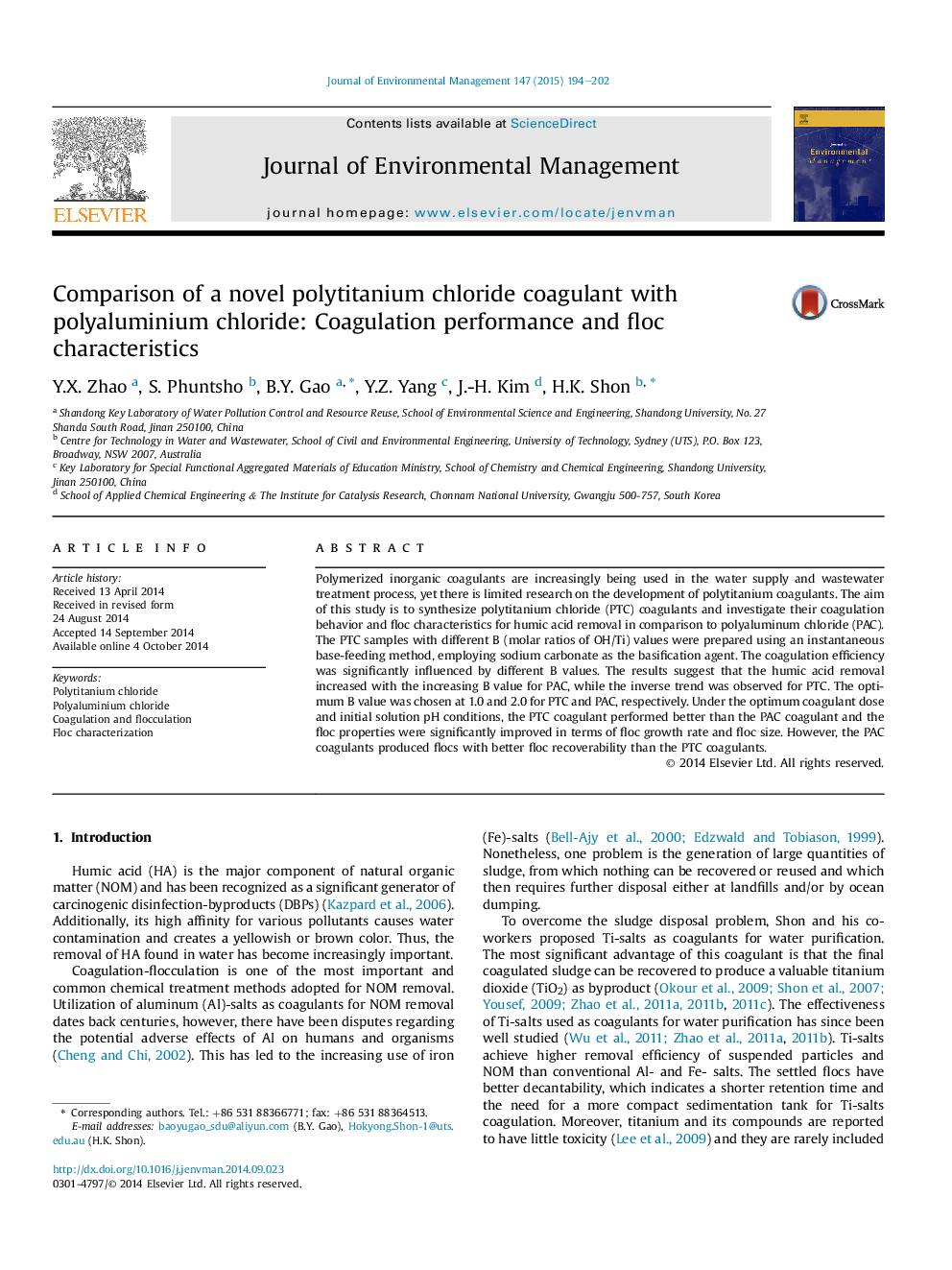| Article ID | Journal | Published Year | Pages | File Type |
|---|---|---|---|---|
| 1055660 | Journal of Environmental Management | 2015 | 9 Pages |
•Stable PTC coagulants were synthesized employing Na2CO3 as the basification agent.•Coagulation behavior of PTC was comparatively investigated against PAC.•PTC performs better than PAC in terms of organic matter removal and floc properties.•PTC is an efficient and promising coagulant for water purification.
Polymerized inorganic coagulants are increasingly being used in the water supply and wastewater treatment process, yet there is limited research on the development of polytitanium coagulants. The aim of this study is to synthesize polytitanium chloride (PTC) coagulants and investigate their coagulation behavior and floc characteristics for humic acid removal in comparison to polyaluminum chloride (PAC). The PTC samples with different B (molar ratios of OH/Ti) values were prepared using an instantaneous base-feeding method, employing sodium carbonate as the basification agent. The coagulation efficiency was significantly influenced by different B values. The results suggest that the humic acid removal increased with the increasing B value for PAC, while the inverse trend was observed for PTC. The optimum B value was chosen at 1.0 and 2.0 for PTC and PAC, respectively. Under the optimum coagulant dose and initial solution pH conditions, the PTC coagulant performed better than the PAC coagulant and the floc properties were significantly improved in terms of floc growth rate and floc size. However, the PAC coagulants produced flocs with better floc recoverability than the PTC coagulants.
Graphical abstractThe kinetic floc growth, breakage and regrowth profiles with different flocculants:Figure optionsDownload full-size imageDownload as PowerPoint slide
